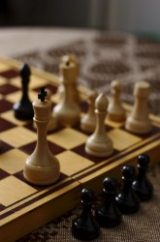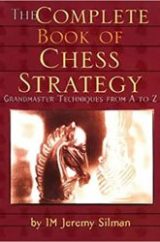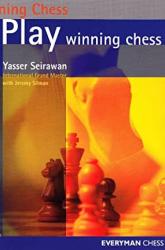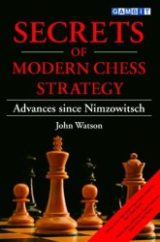Best Chess Books for Intermediate Players
| Photo | Title | Rating | Length | Buy |
|---|---|---|---|---|

|
Chess Fundamentals | 9.18/10 | 224 Pages | Check Price On Amazon |

|
Pawn Structure Chess | 9.36/10 | 368 Pages | Check Price On Amazon |

|
How to Open a Chess Game | 9.12/10 | 260 Pages | Check Price On Amazon |
Chess Fundamentals by Jose Raul Capablanca



 Classic of Chess
Classic of Chess
Chess Fundamentals was initially published, nearly a hundred years ago, in 1921 by one of the greatest chess players in all of history – Jose Raul Capablanca. To this day, and maybe even because of the long period in time during which the book has been read and put to use, it stands as a classic of chess writing that anyone ought to take up.
One of the most adored aspects of this book is the thought process of Capablanca, that is exquisitely and in a fashion that is markedly fascinating explained. To learn more about this wonderful book, take a look at our Chess Fundamentals review.
Straight to the Point
Any of the commentary by Capablanca is straight to the point, nothing is superfluous and everything is superbly insightful. This is where it differs a lot, and we are thankful for this difference, from other books where everything is either overly explained, overflowing with footnotes, or is just breezed through.
The commentary of Capablanca doesn’t just focus on what moves he made and why he did, but also fleshes out the process of thinking up any and all viable answers to the task at hand. The reader has the secrets present in the mind of chess masters revealed to him, in a tone sincere and reflective.
Lush and Organized
Additionally, the writing is lush, nicely organized with all of the simpler concepts properly introduced, then promptly recalled and revisited during the later phases of the game (and the book.)
Capablanca’s most important advice is that the road towards improving one’s game is not by studying or memorizing opening lines, but taking the time to learn the endgame.
Strategy That Will Suit You the Most
This isn’t to say that Capablanca suggest just to go out there and try to checkmate your opponent with complete disregard for your piece’s safety, but to find the tactics and strategies that will ensure the most success.
The book is a classic for a reason and we cannot, while remaining genuine and sincere, not mention its value. Truly one of the best chess books for intermediate players.
Pawn Structure Chess by Andrew Soltis


 Beyond Practical
Beyond Practical
Andrew Soltis published his classic Pawn Structure Chess in 1976 and, as it stands, it is one of the best intermediate player chess books out there.
The most praise-worthy aspect of the classic is its organization. Segmented by openings and pawn structures that are made up because of these opening. This is how the book succeeds at the value of practicality – you can flip right away from any chapter, in particular, to an opening that is relevant and nothing will be lost.
Pawn Skeleton
While pawns are oftentimes regarded as weak and marginal due to their very restricted range of mobility, Soltis sees this limited movement as a very important and worthwhile benefit. Pawns are able to make a half-permanent structure, that is usually referred to as a ‘pawn skeleton’. This ‘pawn skeleton’ sets up the lines of the territory for the forthcoming bout and crafts how the game will progress during its course.
That is why comprehending the effects that pawns have on the game is a must. You can find more about this book in our review of Pawn Structure Chess book.
Strengths and Weaknesses
What Soltis pays special attention to during the book is the recognition of the strengths and implicit weaknesses that the chains of pawns have; how to swap pawns in the center and, incidentally, when not to do this; how to make and use to your advantage certain pawn ‘holes’.
Additionally, Soltis explains how to hinder the movement of your opponent’s pieces and what to do if this same thing happens to you, and how to handle and take care of the commonplace pawn structures of every opening and all of the larger variations.
Worth a Read
Like we mentioned, the book is superb for studying openings and the middlegame. A wonderful book like Pawn Structure Chess is very much worth the read and mustn’t be disregarded as just another chess book – it is much more than that.
How to Open a Chess Game by Larry Evans

 Both Theory and Practice
Both Theory and Practice
How to Open a Chess Game was published nearly fifty years ago, in 1974. While the author is Larry Evans, a master of chess in his own right, there are several grandmasters and their respective tips for opening a game of chess incorporated and utilized wonderfully in this volume.
The book is just a brilliant one, featuring both the theoretical approach towards the idea of opening a game, but also featuring practical examples of how to achieve just that. It teaches that the opening of the game is the most important part since the midgame and endgame are completely dependent on the outcome of the opening.
Principles of Opening Game
Readers from around the world agree that it is a fantastic book, featuring great tips and instructions for intermediate players, while even more experienced chess players can find plenty of things of use here. No wonder that we dedicated the whole article to this amazing book. Check out our How to Open a Chess Game book review.
The book begins with Larry Evans. Larry tells the reader what the fundamental rules and principles of opening play are – this being that you need to: dominate the center, castle as early as possible, develop your pieces fast, don’t move the same piece multiple times, Knights before Bishops, don’t play around with your Queen, don’t go for useless checks, don’t sacrifice pieces for nothing, etc.
Grand Classic
After Larry, we have Svetozar Gligoric as he expands upon the same principles. He uses great examples from real games of the top grandmasters, he being one himself. In the following chapters, Vlastimil Hort, Lajos Portisch, Tigran Petrosian, Bent Larsen, and Paul Keres all give their contribution to this volume, making it the grand classic that it is regarded as, today.
We cannot recommend this one enough, it genuinely is one of, if not the best, books for intermediate chess players.
Michael Englert
Michael is a graduate of cultural studies and history. He enjoys a good bottle of wine and (surprise, surprise) reading. As a small-town librarian, he is currently relishing the silence and peaceful atmosphere that is prevailing.





